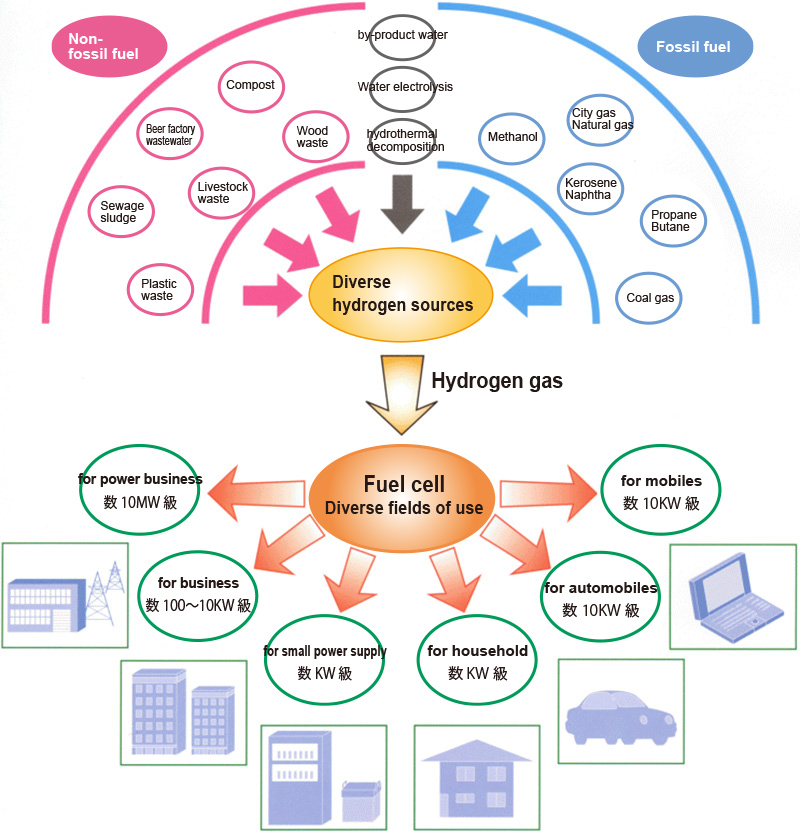1.Saving energy and reducing environmental impact
Fuel cells, which directly generate electricity through the electrochemical reaction of hydrogen and oxygen, are characterized by high power generation efficiency and almost no emission of environmentally hazardous substances.
Cogeneration is possible, which efficiently and effectively utilizes the heat generated during power generation.
This has a great effect on energy conservation, reduction of carbon monoxide and carbon dioxide, and suppression of emission of harmful substances.
2.Various fields of use
Not only for residential use such as Ene-Farm, but also for medium-sized cogeneration in office buildings, hospitals, etc., and not only for passenger vehicles(FCV), but also for large-scale commercial mobility (HDV), railroads, and ships. It is used in a wide variety of fields.
3.Diverse hydrogen sources
The hydrogen supplied to the fuel cell is not limited to fossil fuels such as city gas, LPG, and kerosene, but also biogas from raw garbage, waste wood, sludge from sewage treatment plants, and wastewater from breweries.
It can also be extracted from a wide range of non-fossil fuel sources, such as, contributing to the diversification of fuels, the utilization of unused energy, and the reduction of environmental emissions from waste.
In the future, it is expected that green hydrogen produced from renewable energy will be used as fuel for fuel cells.
4.Ongoing development and commercialization
Fuel cells have a very long history, and Lord Grove’s successful experiment in fuel cell power generation dates back to 1839. 1839 is the 10th year of Tempo. Around the time when Shinsaku Takasugi was born. The story takes place shortly after Gennai Hiraga invented the electric guitar. Since then, various types of fuel cells have been developed and evolved. However, from the economic point of view, power generation by heat engines became mainstream in the world, and in the 1960s, fuel cells evolved mainly for niche applications such as space utilization.
In 1987, a Canadian venture company, Ballard, achieved high performance through the development of a DOW membrane that exhibited epoch-making proton conductivity, and had a major impact on the world. With this as an opportunity, the development of various applications such as relatively compact stationary use and moving bodies, which had been difficult to achieve high efficiency with heat engines, was suggested, and PEFC development began in earnest worldwide. It became a thing.
After that, many national projects such as the Millennium Project and large-scale demonstration projects were promoted in Japan, and in 2009, Ene-Farm was put into practical use for the first time in the world, and in 2014, the Toyota MIRAI was launched. Currently, the development of pure hydrogen fuel cells and fuel cells for large commercial vehicles (HDV) is underway for the coming hydrogen society.

